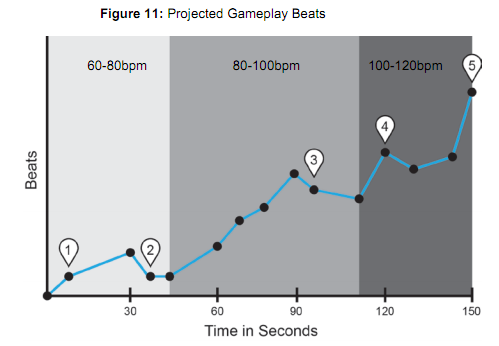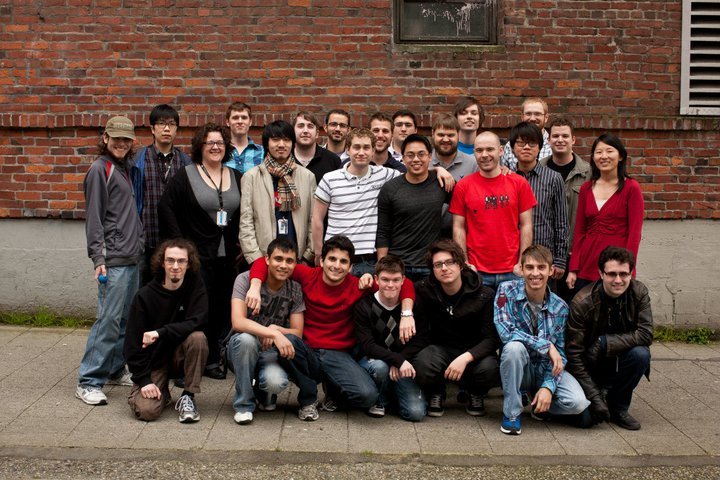by Annie | Aug 9, 2011 | Game Design
Think games are just a simple pastime? Think again. Around the world, game makers are creating games that continue to push the boundary in education, health, and world issues. Here are some of the things games have...

by Annie | Jul 14, 2011 | Game Design
One of the most commonly dreaded terms in the VFS game design program is term 3. Why? Because that’s the term you write your first DDD – detailed design document. Why is the DDD such a dreaded assignment? After all, don’t game designers love coming up with ideas and fleshing them out? Absolutely. However, an effective DDD requires a level of detail many novice game designers aren’t accustomed to thinking about. Things like rate of fire, game time projections, and difficulty ramping. So how do you go about writing one of these so-called DDDs? Well, there’s no right or wrong way to go about it. First and foremost, you must keep in mind the audience you’re writing for. Think about Your Audience Think about the other members of your team: the programmers, artists, level designers, sound designers, etc. These are the people you’re writing the document for. What information do they need to create the game? As you write, imagine each of them, tired and grumpy at 2am trying to fumble through your document to glean the information necessary to meet the next deadline. In other words, your DDD needs to be both detailed and concise. Information like, “A bunch of enemies will appear on screen when you enter the hallway” is of little use to a programmer trying to script specific encounters. Be specific. Your job as a game designer is to anticipate the issues various people on your team will have when they try to create the game. So put yourself in their shoes, and make sure the DDD meets their needs. Keep It Organized Another thing that...
by Annie | Jul 6, 2011 | Game Design
One of the most valuable pieces of advice I got during my year at VFS was to just do it. As creative individuals, we could spend countless hours brainstorming concept after concept, piling on features and thinking of different themes. But in the end, the follow-through is what counts. In my experience, the sooner you lock down a game concept, the better. You’re better off spending your time iterating on a single idea to make it as great as possible than coming up with lots of different ideas while leaving yourself very little time to make any of them good. Sure, everyone wants to come up with that innovative idea. That smashing new concept that no one’s ever thought of, that’s so genius it’ll blow everyone’s socks off. But if it hasn’t come to you within a few brainstorming sessions, choose one of the less genius ideas instead and make it as awesome as possible. And who knows? Maybe the genius idea will come about in the next round. And by then, if you’ve already followed through with another idea, you’ll have more experience and wisdom to bring to your genius idea. So go forth, create, and follow through. Because to be a great game designer, you’ve just got to do...
by Annie | Jul 4, 2011 | Game Design
What’s it like to be a game designer? Well, I’m pretty new to the field, but I can already tell you that it’s a lot of hard work. But also a ton of fun. I started working this week as an official game designer. You know, out in the real world. My job? To design games that encourage kids to be physically active. Sounds a bit counterintuitive, using video games to get kids up off the couch, but that’s where the creative challenge comes in. Our initial aim is to release an iOS game that is highly addictive and gets kids to move around to get some exercise. Because of the platform, we’re limited to iOS device capabilities, namely the accelerometer and gyroscope. (GPS and compass are possibilities as well, but we’re thinking most 6- to 12-year-olds would probably have iPods rather than iPhones.) Because I’m working with a startup (the entire team is just 7 people), I’m in the unique position of having a lot of say in the creative process even though I’m fresh out of school. As the main designer on the project, my days mainly consist of brainstorming and research (i.e., playing comparable games and reading lots of articles). And already, the many assignments we worked on and the skills we acquired at VFS are coming in quite handy. The deliverables on my list in the coming months include a concept doc, design doc, QA plan, tuning for pacing and difficulty, design of control schemes, and UI design, as well as numerous pitches to the team about different concepts under development. A year ago today...

by Annie | Jun 24, 2011 | Game Design
It’s hard to put into words all the thoughts and emotions that come with graduation, especially one marking the end of such an intense year. I went into the year not knowing what to expect and was blown away every step of the way. I learned more than I ever could’ve imagined and met passionate and creative people who continue to inspire me every day. Moving forward into the real world is a scary step, but with the vast amount of knowledge and skills I’ve acquired at VFS and the extensive support network I now have in my corner, I’m confident I’ll be able to tackle the next big challenge. By now, most of you know that my main interests in game design lie in serious games. That is, those games that reach into the real world and have the potential to effect change in players’ lives. And you also know that I crave opportunities to solve big problems in creative ways. So, I’m excited to announce that my next big venture will be with a startup company here in Vancouver whose aim is to create games to encourage kids to be more physically active. With growing issues of childhood obesity, physical fitness has become a huge societal issue. I’ve seen firsthand how much kids love games. Games transformed my classroom and turned even the most reluctant students into eager learners. Thus, I know that games have the potential to change people’s lives. Like I said, it’s scary stepping out into the real world. I’m now accountable for designing real games, rather than just concepts for various assignments. But...

by Annie | Jun 21, 2011 | Game Design
Check out Blokhead and some of the other games from our class on the VFS...



